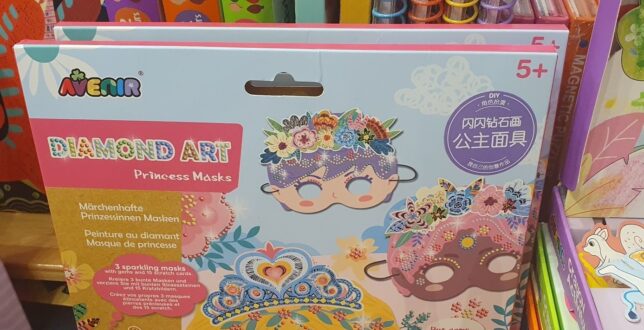
As the world becomes increasingly digital, having a robust online presence and a strategic approach to content marketing is more important than ever. But with so many tactics and strategies, it can be overwhelming to know where to start.
That’s where I come in. As a specialist in copywriting, content writing, and all forms of digital marketing, I’ve worked with numerous manufacturers to create compelling content that drives traffic, engages audiences, and ultimately boosts sales.
In this article, I’ll share some top content marketing strategies for B2B food industries, from creating educational resources to leveraging social media. So grab a snack and prepare to kick your food and beverage content marketing to the next level!
Understanding Your Target Audience
Knowing to whom you deliver your message is the initial step in developing a successful B2B or B2C content marketing strategy. Who are your prospects, what do they care about, and what are their pain points? For food and beverage manufacturers, your audience may include chefs, restaurant owners, other food service professionals, distributors, retailers, and other B2B partners. It’s important to create buyer personas based on these different segments so that you can tailor your messaging and content to their specific needs.
Once you’ve recognized your target audience, you can create content that speaks directly to them. For example, if you’re targeting chefs, you might create recipe videos or blog posts that offer tips and tricks for using your ingredients in new and innovative ways.

Identifying Your Unique Selling Proposition
For your business to stand out in a crowded market, identify your unique selling proposition (USP). What sets your F&B products apart from the competition? Is it your commitment to sustainability, fast service, locally sourced ingredients, or innovative flavor profiles? Whatever it is, you’re highlighting it in your content marketing.
I advise that you use your USP strategically in all aspects of your content marketing, from the topics you cover to the visuals you use. For example, if your USP is your commitment to sustainability, you might create a blog post highlighting your efforts to reduce waste or promote environmentally friendly packaging. Include relevant images and videos demonstrating your eco-friendly practices, such as composting, recycling, or using renewable energy sources.

Creating a Content Marketing Plan
Once you’ve identified your target audience and your USP, it’s time to create a content marketing plan. This plan should include a calendar of topics and a list of the content types you’ll create (blog posts, videos, social media posts, etc.). Define the goals for each piece of content, such as to drive traffic to your website, generate leads, or increase brand awareness.
Another key component of a successful B2B content marketing plan is measuring and analyzing your results. Tracking website traffic, social media engagement and lead generation metrics can help you refine your strategy and make data-driven decisions.
Make the content marketing plan flexible enough for necessary changes and adjustments. For example, if a new trend or topic emerges in your industry, you may want to pivot your content to address it. You should monitor your analytics regularly to see which content best resonates with your audience and adjust your strategy accordingly.
Choosing The Right Content Formats for Your Audience
There’s no one-size-fits-all approach to B2B content marketing. What works best for your audience will depend on their preferences and behaviors. For example, if your target audience is active on Instagram, create relevant photographic and video content. On the other hand, if your audience is more analytical and prefers long-form content, create in-depth blog posts or whitepapers.
Understand how far your prospects are in their buyer’s journey (awareness, consideration, and decision), then create content relevant to each stage.
Let me give you an example. Let’s say someone is in the awareness stage, just starting to research food and beverage products. This person will be more interested in educational resources, such as how-to guides or industry reports. Case studies or product demos are more appropriate for someone in the consideration stage. Content for the decision stage includes competitor comparisons, product information, product demos, and case studies.
Developing a Content Distribution Strategy
Creating engaging marketing content is only half the battle. Your target audience needs to see it. That’s where a content distribution strategy comes in. It outlines the appropriate channels to promote your content: social media, email marketing, or paid advertising.
When choosing which channels to use, know where your target audience spends their time online. For example, if you’re targeting chefs, you might want to focus on LinkedIn, where many food service professionals are active. On the other hand, if you’re targeting retailers, focus on email marketing, as many decision-makers in this industry still prefer to communicate via email.
Leveraging Social Media for B2B Content Marketing
Social media is a powerful B2B content marketing tool, but only when used strategically. Rather than trying to be active on every platform, focus on the ones that are most relevant to your target audience. For example, if you’re targeting restaurant owners, you might want to focus on Facebook and Instagram, where many restaurants have a strong presence.
Use the 80/20 rule to balance B2B content on social media, 80% educational content, to 20% promotional content. While promoting your products and services is fine, you also want to provide value to your audience. Share industry news and trends, highlight other thought leaders or offer tips and advice for running a successful foodservice business.
Measuring The Success of Your B2B Content Marketing Efforts
Continuously track and measure your results to improve your B2B content marketing strategy. Methods include monitoring website traffic, social media engagement, and lead generation metrics. Regularly review your analytics to see which types of content are performing best and adjust your strategy accordingly.
A recent B2B marketing survey revealed that analytics tools, CRM systems, and marketing automation solutions are the best tools, according to marketers, for measuring content marketing performance. Conversion rates are the best and most challenging measurement metric for content marketing. You can start by using the data from Google Analytics to measure four KPIs, Traffic, organic search, navigation, and conversions.
Keep in mind the success of your B2B content marketing efforts is that it’s not always about immediate sales. While generating leads and driving traffic to your website is important, content marketing is also about building brand awareness and establishing your company as a thought leader in your industry.
Common Pitfalls to Avoid in B2B Content Marketing
While there are many benefits to B2B content marketing, there are also some common obstacles to avoid.
Over Promoting
Nobody wants a hard sell, especially B2B audiences. Posting content that is too promotional or delivering promotions too often will drive potential customers away.
About You, Not Them
Your prospects want to know what’s in it for them. How will you solve their problem? If your content doesn’t align with their needs or where they stand in the buying cycle, you’ll lose them. Don’t create content that is too generic or doesn’t speak directly to your target audience.
No Content Strategy
The Content Marketing Institute reports that almost 70% of successful marketers have a clearly defined B2B content strategy. Statistically, a documented content strategy is crucial to content marketing success.
Neglecting the Content Cycle
You must manage content as you would a PPC or email campaign. It has a cycle of creation, management, amplification, and tracking. Missing any step creates wasted energy and effort.
Lack of Content Distribution
Make sure you have a solid distribution strategy in place and that you’re promoting your content on the proper channels.
Undeniably, a time-consuming, complex process. It takes at least one team member to dedicate the time to see each project from start to finish. Outsourcing some of these tasks is OK if someone in-house oversees the outcome.
What Content Do You Need?
Marketers can’t rely on one type of content or channel to reach their prospects. It takes a good battle plan to win the information war and make a sale.
B2B content marketing can be a powerful tool for food and beverage manufacturers looking to build their brands, generate leads, and drive sales. Success requires thoroughly understanding your target audience, believing in your USP, and creating a strategic content marketing plan. Developing content that resonates with your audience drives results. Whether you’re creating blog posts, videos, or social media content, always provide value to your audience. Limit straight promotional content to 20% of your campaigns. With these content writing strategies in mind, you’ll be a successful B2B content marketer. If you need help with B2B food writing, content strategy, or creation, contact me at Grovers Copywriting.
